Paul Kerr is an award winning photographer from Canberra, Australia who we interview here to discuss his landscape astrophotography.
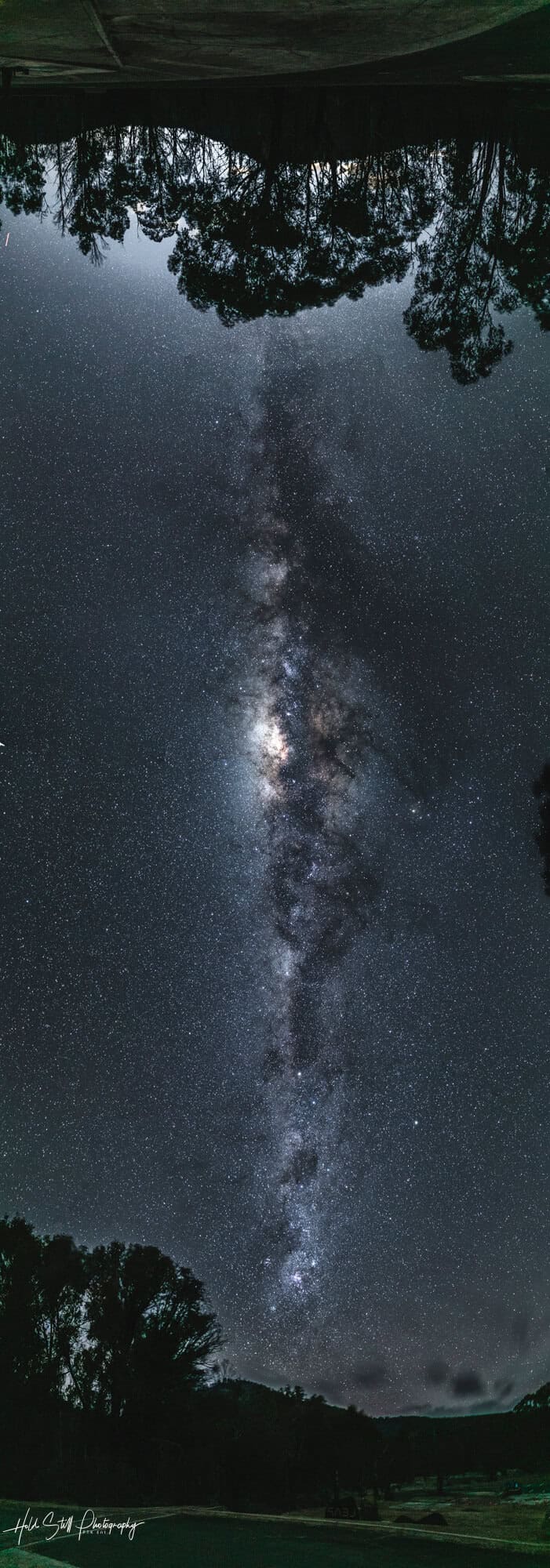
“I get a great sense of peace being out in nature and experiencing it, which helps to have an outlet away from the 9-5 grind of normal work.”
What’s your focus in astrophotography?
My current focus is really on landscape astrophotography. I’m looking to find new sites and enhance my capabilities while continuing to build on my own style.
There are two areas I would like to add into the future:
- Aurora shooting (Aurora Australis is currently going through a high period of activity and can be seen even further north than Canberra at times).
- Deep space astrophotography. I really need to improve my ability to pinpoint align the trackers to use my current gear and longer lenses.
I am also starting to run workshops myself.
Teaching people is something I want to do and am building a good level of training material to show others how to plan and shoot astrophotography in this area and along the coast of Southern New South Wales (NSW).
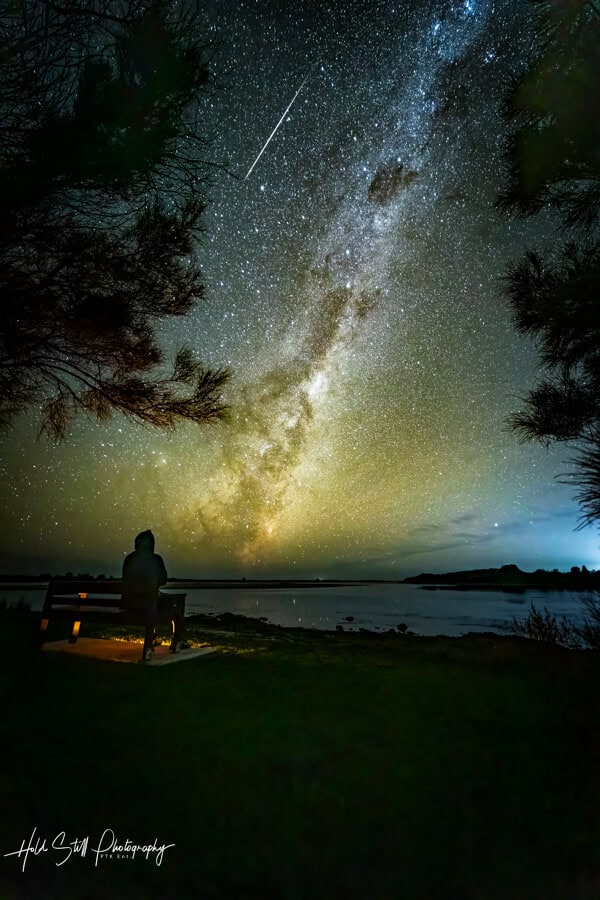
How do you plan your imaging?
I am based in Canberra, Australia. I am really very lucky in the fact that we are at about 670m above sea level here, it has a lack of humidity and low light pollution which means more clarity in the air to shoot in.
My place is very handy to get to the dark skies of Namadgi and Brindabella National Parks.
The other place I often go is the South Coast of NSW which has some magical rock formations and sites that are brilliant for all types of photography.
When I’m planning, I often head out in my 4WD along the forest tracks looking for interesting sites, whether it be a tree, valley, pond or man-made construct to shoot.
I use tools like PhotoPills, and Light Pollution Map to work out my shoot.
You can see here a shot I planned with Photopills and then the final result afterwards:
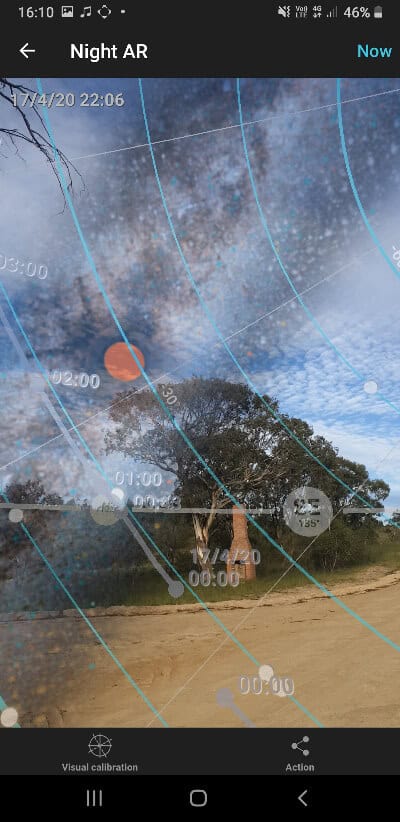
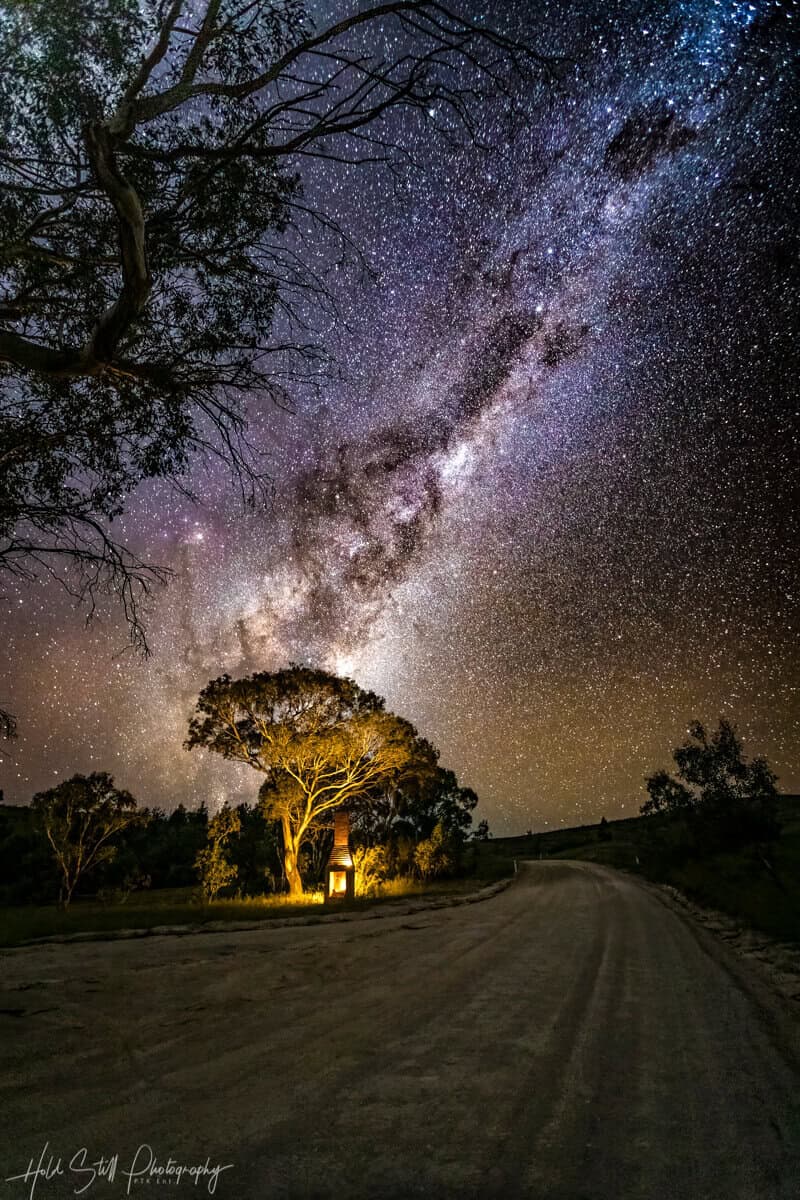
When I am going further abroad, I will take to searching for what are considered sites of interest to find and plan a shoot with.
I then use a lot of weather apps and Cloud Free Night to help me determine what the likelihood of clear or cloudy skies are.
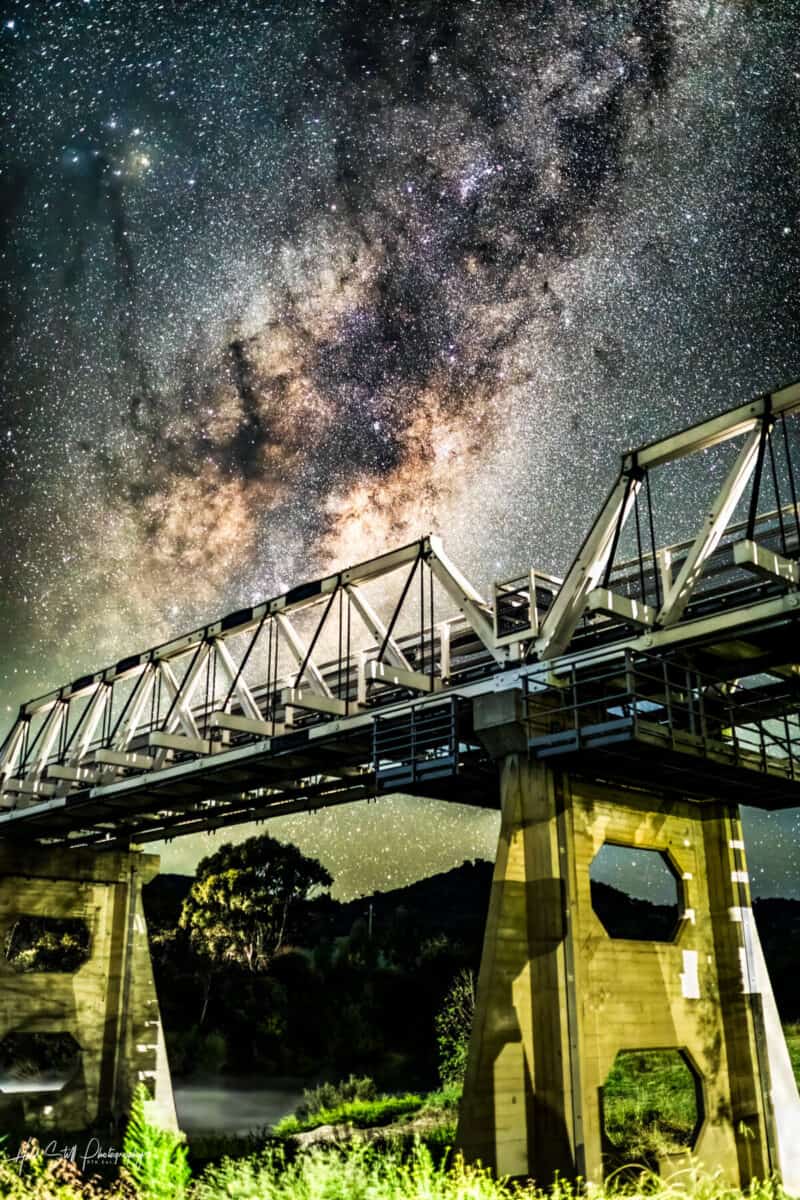
What gear do you use?
I am mainly a Canon shooter. I have:
- A number of Canon EOS 6D’s (one full spectrum modified)
- A Canon 5D Mk IV
- A Canon R6 Mk II (this was my first brand new purchase)
Each camera has it’s own strengths:
- The Canon 6D is a great entry level, full frame DSLR. It has brilliant low light capabilities and can be picked up relatively cheaply second hand. It is capable but either require Magic Lantern or a trigger like Arsenal or Pluto to be able to do things like star trails or timelapses.
- The Canon 5D Mk IV is my sturdy workhorse. It has all the functionality out of the box, colour is great and has a larger MP count than the 6D so you can get bigger prints.
- The Canon R6 Mk II is my latest camera and I love the articulating screen for set up. It is easy to use, has good low light capabilities and all the functionality you need. (Quick tip with it though, turn off the In Body Stabilisation (IBIS) when you are doing a panorama shoot.)
All my cameras (except the R6) and 90% of my lenses have all been purchased second hand. I think it’s best if you can get to look at any gear and take a few shots before buying.
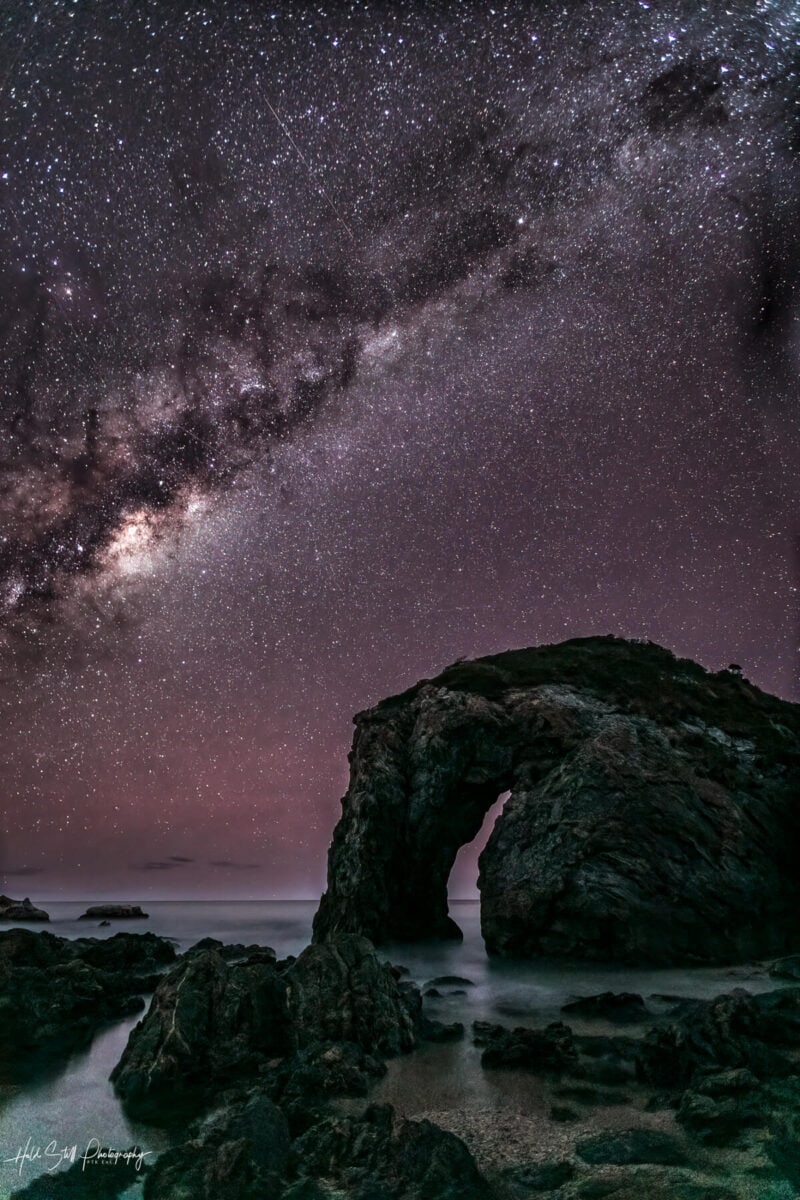
My main lenses for astrophotography are:
- Canon 24-70 f/2.8
- Canon 16-35 f/2.8
- Sigma 35mm ART f/1.4 (my favourite)
- Samyang 14mm f/2.8
I used to use the 14mm exclusively as I would try to incorporate the whole Celestial Emu in shots, but it tended to distort or make the subject I was capturing seem very small and insignificant.
As I progressed I loved the view and normal feel that the 35mm gave to shots. I therefore learned how to use the focal length to add to the compositional aspects rather than just trying to capture as much as possible of the Milky Way.
It also depends on the time I have. There was one night where I had spent around 6 hours around at Horsehead Rock – an ancient rock formation on the South Coast of NSW.
The night was meant to be clear, but being on the coast things don’t always work that way. Near dark, the clouds started rolling in (only later when I saw the timelapse I captured, I could see the clouds coming from multiple directions.)
The initial plan was to undertake a panorama with the 35mm lens, however, with the way the sky was only had a limited chance so the choice to use the Samyang 14 mm was made.
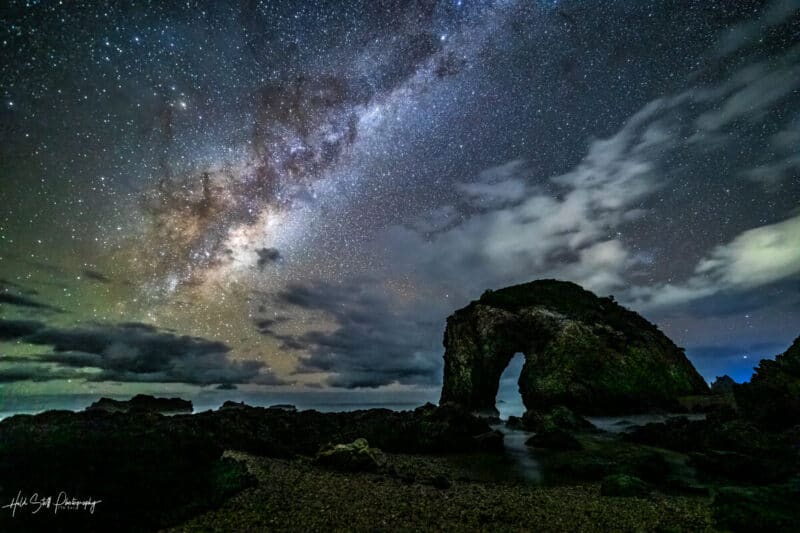
I have a few tools that also help with my work:
- A range of Manfrotto and Sirui tripods (carbon fibre and aluminium)
- Move Shoot Move (MSM) Rotator tracker
- Sky-Watcher Star Adventurer 2i Star Tracker
- 2 x Syrp Genie Mini II and panoramic arms to make panoramas easier.
- Arsenal smart trigger (great for Holy Grail timelapse shooting)
- Pluto Trigger (great for timelapse, star trail or lightning)
- NiSi square and round filters (Star Soft, Night Pollution)
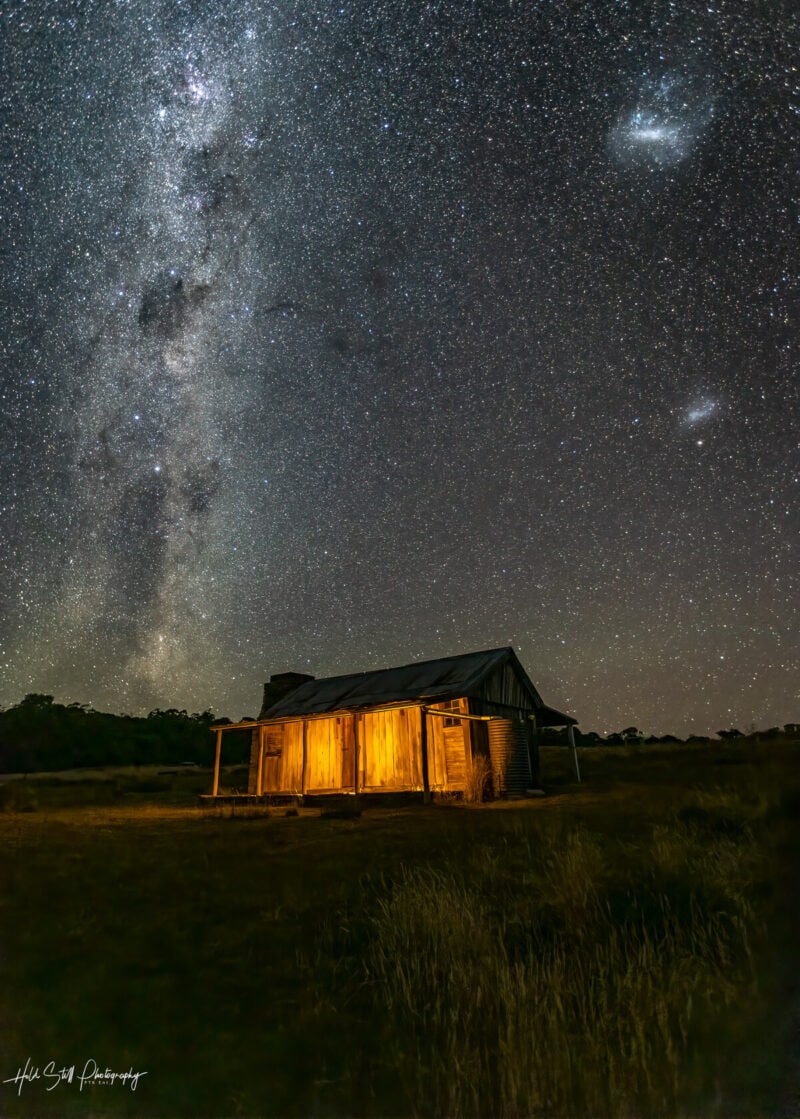
What do you do for post-processing?
My post processing uses:
- Adobe Lightroom
- Adobe Photoshop
- Topaz Labs Photo AI (Sharpen & Denoise)
- LRT Timelapse for creating timelapses
I do most of my work in Lightroom but am wanting to enhance my Photoshop skills.
I’ve learnt the basics of astrophotography and editing from Ari Rex. He is an International Photography Awards winner for nature photography. He gave me the basis of my skills to learn and is a real mentor for me now.
I have also been on other photography courses (not astro) with brilliant professionals Warren Keelan and William Patino who have also influenced my compositional and editing styles.
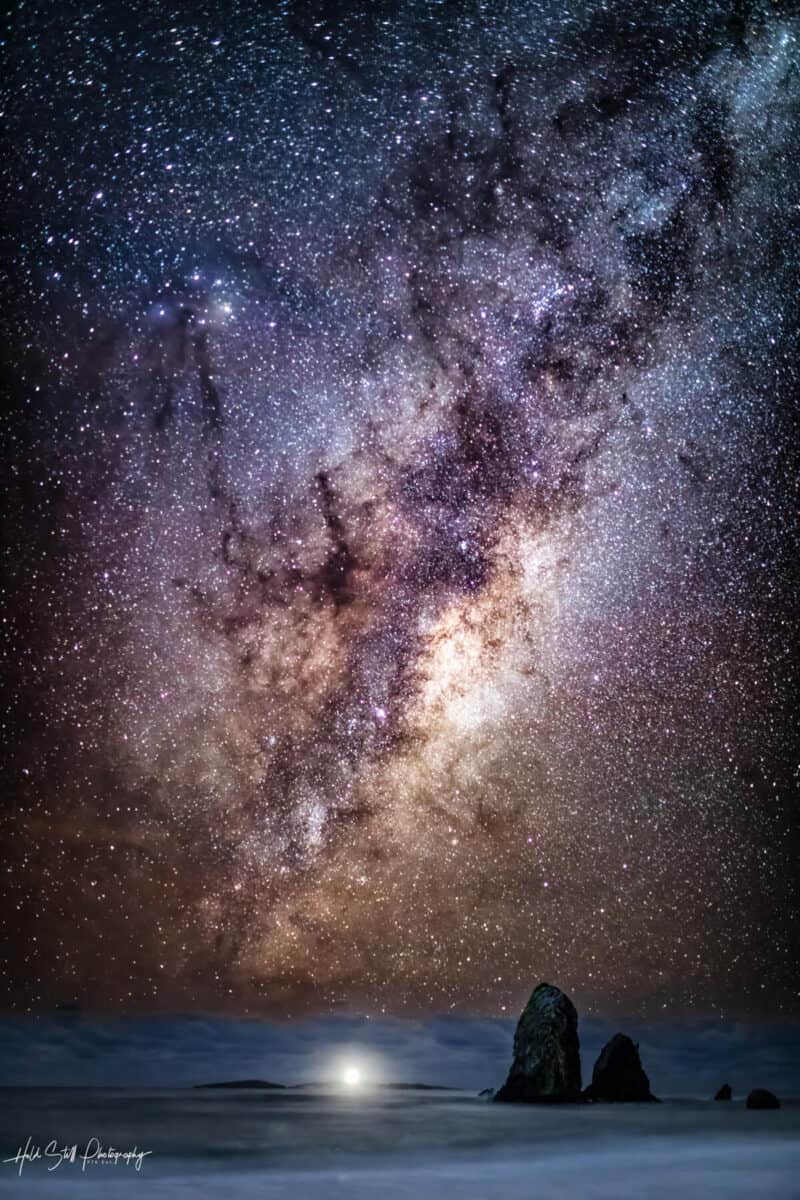
What do you recommend for beginners?
I can recommend trying to get on a course with an astrophotographer whom you admire if you can.
It may not be the cheapest, but if it is limited to 3 or 4 people you will get a lot of information and support to set you off on your journey. If not, hit up their websites and see what tools or training they have available.
Get out in the field and don’t be afraid to strike up a conversation with another photographer if you come across them.
I tend to go out a lot by myself, so it is always a good time to pass the night having a chat when you run into people. You can learn much just in those conversations, and people can always learn from you.
I had purchased the Alyn Wallace editing tools just prior to his tragic passing and I find some of his presets to be really useful.
Another place I often go for inspiration or learning is the Facebook group run by Royce Bair – Nightscaper.
Royce’s website with some great educational material available there as well.
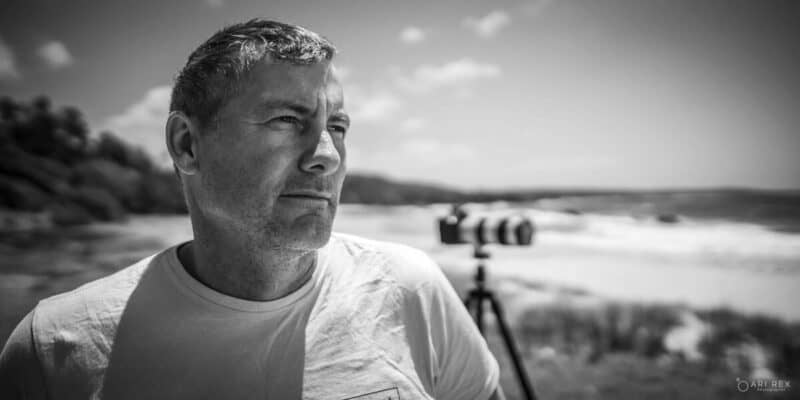
About You – Paul Kerr / Hold Still Photography
My name is Paul and I run Hold Still Photography.
I had always enjoyed playing around with cameras and shooting scenes, travel, music (really bad in low light).
I’d bought a Canon 600D in 2014 for travelling and had played around a bit more but not really taken it seriously.
One of my major passions was live music. I loved rock and heavy metal and had a friend who ran an online magazine where I wrote album reviews, did interviews and also did live music tour reviews. This led to photographing gigs. So funnily enough my getting hooked on photography came through music.
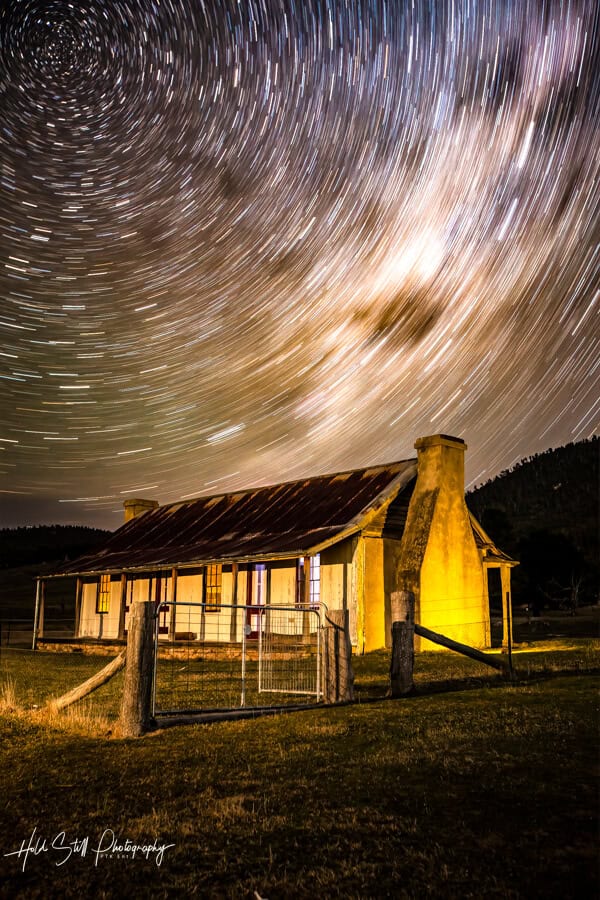
Ever since I was a child, I loved stars and I was looking at social media and came across a photographer, based in Canberra, Ari Rex, who did a lot of astrophotography.
I wanted to learn how to take pictures of the stars and took my first image when I went to a farm near Gundagai. Not having much idea but lots of enthusiasm, it came out alright, but nothing like Ari’s. I contacted Ari now and then for about 10 months, before finally taking the plunge and attending one of his Milky Way workshops in late 2018.
I get a great sense of peace being out in nature and experiencing it, which helps to have an outlet away from the 9-5 grind of normal work. I now help Ari as a teacher on some of his Milky Way workshops and have been running my own workshops on the NSW South Coast and Canberra, as it gives me so much joy to see other people be able to create a shot that excites them.
I’m always looking to expand my skills and have been to a few different workshops to try out different styles, it’s something I encourage everyone to do. I’ve undertaken an ocean photography course with Warren Keelan and Russell Ord, and Seascapes/Landscapes with William Patino and they were amazing.
I’m hoping to try and combine some aspects of this into my photography into the future. Formally, I am undertaking the Diploma in Photography and Photo Editing. The studies there is taking me out of my comfort zone, but will only help me continue to build on my skills and incorporate into this amazing journey I am on.
My proudest moment is capturing the Milky Way above Brayshaws Hut in the South of the Australian Capital Territory (ACT) in Namadgi National Park.
This image was one I had planned for a couple of years, and I had to overcome a number of logistical challenges that night.
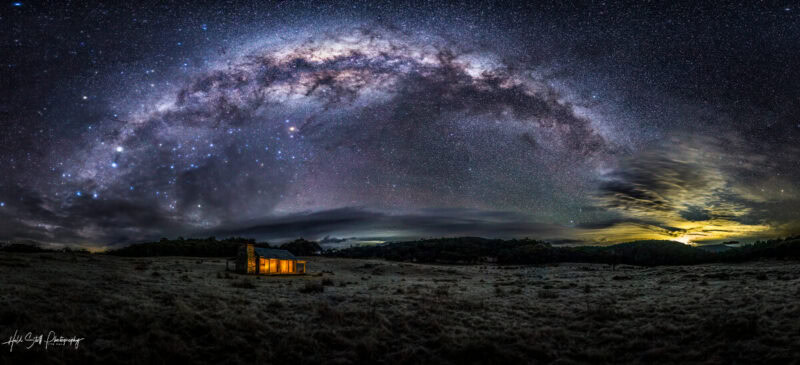
The timing was going to be tight; I knew that there was predicted heavy cloud by 11pm and the Milky Way Arch would be starting it’s descent into the West at about 10.15pm so it was going to be almost directly overhead.
I had to revert to my Canon 6D to capture the image as I had just come back from the Northern Territory where my 5D Mk IV had broken the thread out of the tripod connection.
This meant I was a bit unfamiliar to be adjusting settings and checking images in the dark (I really try to not turn my lights on too much when I am out), so things were slower than normal as the 6D is more reliant on buttons, where the 5D has a touch screen.
However, I managed to get the 55 panoramic images before the clouds came in and completely obliterated the sky. I really think the clouds forming added to the atmosphere in the picture.
When I first stitched it together in Lightroom I was absolutely stoked with it. This image has now gone on to win multiple awards:
- 2nd place in the 2023 International Photography Awards (IPA)
- Top 25 in the Australian Photographic Prize
- Platinum Winner in the 2023 London Photography Awards
- Top 100 (68) in the Australian Photography Magazine Landscape Awards
- Finalist in the Canon Clique Awards
People can find me at



I love my Canon 6ds and use the magic lantern software for shooting holy grail time lapse!
I currently have three working 6ds and oldest now has over 600 thousand shots on the shutter
Nice! Thanks John